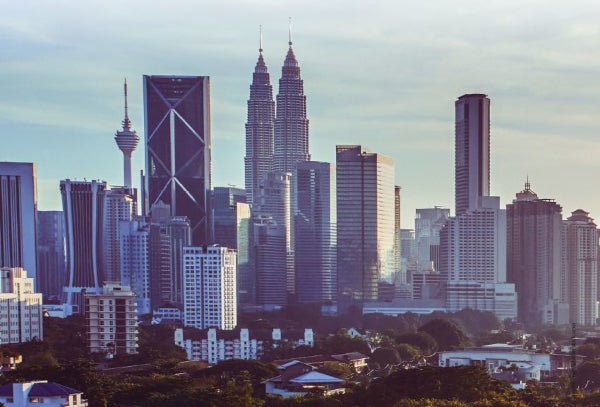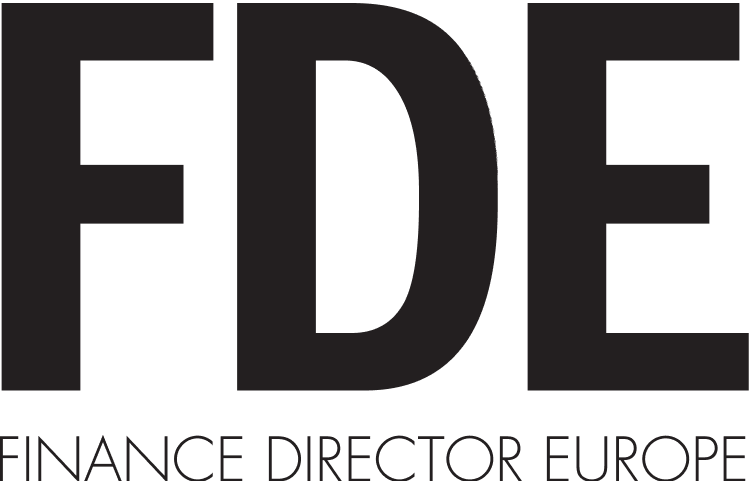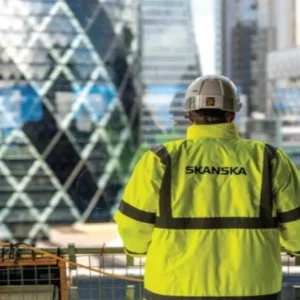
Atumultuous two and a half years have scarpered the plans, or at least the predictions, of seasoned investors the world over. With economies brought to their knees by a pandemic and a fluctuating global recovery rate, the future of foreign investment has become anything but predictable.
Yet amid these upheavals, global FDI was up 77% – to an estimated $1.65tn in 2021 compared with 2020. To put it another way, it has already surpassed pre-Covid levels. While it’s a stretch to suggest such a strong rebound was inevitable, the outlook for global FDI in 2022 seems to be on firmer footing – piquing the interest of European investors, particularly in infrastructure sectors. “After a crisis, investment usually goes up quite quickly as people want to spend money again,” Mike Pfister, senior adviser at the OECD, tells me. “It’s usually a good time to invest.”
Fair enough – but that hardly means the trajectory for global FDI is straightforward. According to a survey by Deloitte, economic activity has strengthened, but CFOs were still not as confident in the autumn of 2021 as they were in the spring. The Deloitte report acknowledges that “automotive is bedevilled by particularly strong supply problems while CFOs in tourism and travel, opening up again after lockdowns, are the most optimistic”. Confidence – and therefore CFO investment habits – still vary from sector to sector, as well as from region to region.
The most substantial FDI growth occurred, somewhat unsurprisingly, in developed economies such as the US – boasting an increase of 114% – while formerly key players like India suffered a 26% decrease in investment flow. “Favourable financing conditions, recovery stimulus packages, and overseas investment programmes” are what investors are looking for, is how Dr James Zhan, senior director of investment and enterprise at the United Nations Conference on Trade and Development (UNCTAD), put it in special issue seven of Investment Policy Monitor.
If Covid-recovery strategy is a good metric for judging a country’s FDI appeal, there is scope for new destinations to break through on the scene. Bloomberg’s Covid resilience rankings place Colombia, Chile and Malaysia in the top 20, for instance. Not incidentally, all these countries come before the US.

Rising East
One market block squaring up to traditional FDI hotspots is Southeast Asia, benefitting from a booming China as its neighbour. The signing of the Regional Comprehensive Economic Partnership (RCEP) in November 2020, heralding a free trade agreement between 15 economies in the Asian market, acts as an engine for growth across the continent, with FDI increases obvious across most members. The agreement, according to the Association of Southeast Asian Nations’ (ASEAN) report, is indicative of a united belief in globalisation as a route to national development.
“Among the developing economies, the ones that have done well are in Southeast Asia,” Pfister emphasises. “What will be interesting is not just restoring FDI to pre-pandemic levels but really ensuring that investments align with countries’ development objectives.” Future investment should be driven, at least in part, by a desire to contribute to activities that can actually create local jobs and support local economies.
In its favour, Southeast Asia has large consumer markets and a number of countries that weren’t previously frontrunners in the FDI landscape. As Pfister explains, Thailand, Vietnam, Indonesia and the Philippines are all doing “very good things”. The Philippines, for instance, has undergone a series of successful reforms in recent years, which have greatly improved the local investment climate. As the OECD investment policy review puts it: “The current macroeconomic situation in the Philippines is favourable, remittances are high, the business process outsource industry is booming, and the new Competition Act will help to make the domestic market more competitive.”
“What will be interesting is not just restoring FDI to pre-pandemic levels but really ensuring that investments align with countries’ development objectives.”
77%
Global FDI was up to an estimated $1.65tn in 2021 compared with 2020, and has already surpassed pre-Covid levels.
Economic Times
Of course, strong consumer markets are only interesting to investors if people are able to safely work and spend. But here too, Southeast Asian countries did well. When the pandemic struck, for instance, the Vietnamese government successfully kept infections low among its 97 million citizens by implementing a preventative, low-cost public health strategy, as well as by organising effective measures to protect the economy. “When the investment environment is shaky, when there’s low trust in the government, investment flows are going to suffer,” Pfister says, acknowledging how a government’s actions are critical in deciding which direction potential investors will go.
More broadly, Pfister explains that another key push factor for FDI is whether a country is integrated in regional and global value chains. Southeast Asian countries once again performed well here, attracting more than $68bn of greenfield investment projects – accounting for more than 40% of all wind and solar plants worldwide. Vietnam was also one of the largest FDI recipients to introduce new investment promotion measures and incentives in 2020, growing its list of business lines suitable for investment incentives. FDI inflows into ASEAN reached its highest ever level in 2019 at $182bn, making ASEAN the largest recipient of FDI in the developing world, according to the organisation’s report. The commitment to global investment and trade constitutes about 15% of global FDI stock and more than 33% of global FDI flows in 2020 – and is expected to provide an opportunity for ASEAN and its partners to boost investment and enhance the region’s overall development.
Malaysia is a good example here. An ASEAN member, it boasts a ripening FDI market, with one of the factors being “very dynamic” local companies that started producing semiconductors. Some of these have become leading suppliers worldwide.
A continent ripe with potential
If Southeast Asia is one exciting area of growth, Pfister is also keen to focus on Africa. As he argues: “If you manage to get that same dynamism into Africa, particularly in the bigger economies such as Senegal and Ghana, then these countries will appeal to investors too”. Happily, Africa recently completed its own continental free trade agreement and savvy investors may soon begin to see it as another Southeast Asia.
“Lots of countries introduce a one-in-one-out approach [for regulation] – before you introduce a new one, you have to get rid of an existing one.”
15
The number of countries who signed the RCEP in November 2020, assisting FDI growth across most members.
ASEAN
Even so, the picture isn’t totally rosy. That’s particularly true given the pandemic-related challenges some developing countries are facing. “Africa, for example, has been really struggling with the Covid pandemic because investors have been holding back,” Pfister explains, adding that the recent weaker variants have meant “the fear of operating within a crisis environment has subdued a bit” – but not enough for significant change.
Yet Covid-19 aside, the African Continental Free Trade Area (AfCFTA) presents a major opportunity for African countries. It has the potential to bring millions of people out of poverty and drive huge income gains on a continental and global scale. Even better, Pfister notes that Africa as a continent has a “very young population working in its favour”.
Why does this matter? After all, young people typically have less capital than their parents, and indeed less business experience. Yet Pfister says they nonetheless represent a dynamism that is rapidly gaining admirers. “West Africa is somewhere to watch out for, particularly because it has a booming youthful population that’s going to be very influential if the economy picks up again.” At the same time, strong middle classes are emerging in African countries like Nigeria, where consumer-friendly markets drive interest both in local companies and in global investment – whether via exports, or in building up the local and regional economies.
“One thing Africa will always have in its favour is an extremely high return on investment,” Pfister says. “The economic benefits for companies are huge.” What needs to happen now, the analyst adds, is for those investments to directly help African economies on their development paths – by creating equitable and profitable jobs for regular citizens.
Resilience first
Before anyone places bets on the future of FDI, it’s important to recognise how unpredictable the past few years have been, and how uncertain the next few will be. Resilience, therefore, has never been so valuable – both in a demographic and economic sense.
This includes adapting and streamlining government processes to cope with uncertainty, and to appeal to sceptical investors. One large deterrent is heavy regulation, something that holds back developing economies who have not reformed these processes with time. “You have to strike the right balance,” Pfister comments, adding that taking regular stock of regulations and distilling them to their essence is crucial.
“Lots of countries introduce a one-in-one-out approach [for regulation] – before you introduce a new one, you have to get rid of an existing one,” he continues. This works for building trust in governments too – and benefits politicians keen to show their business-friendly side. Of course a strong foundation of regulation – particularly social and environmental – is critical. But for emerging FDI hotspots to truly succeed, they need to make the process as easy for investors as possible.
“We always say that economies don’t follow geopolitics,” Pfister adds. “They follow markets, so wif there’s a market then economies will go where there are opportunities.” At the moment, Africa is still lagging. In fact, on a regulatory front, so is the Philippines. As Pfister puts it, the archipelago represents “one of the most closed economies for foreign investment,” not least because it’s hard to totally own a company as a foreign investor.
Traditional centre or not, investors want certainty. “In every crisis there is an opportunity,” says Pfister, “and this is an opportunity for governments to really put policies in place that can help attract more sustainable investment”. If ever there was a need for a more globalised economy, it’s in the aftermath of a pandemic when developing nations have been hit the hardest. But with resilience, regulation strategy, and indeed the right investment, they could ultimately bounce back strongest.






